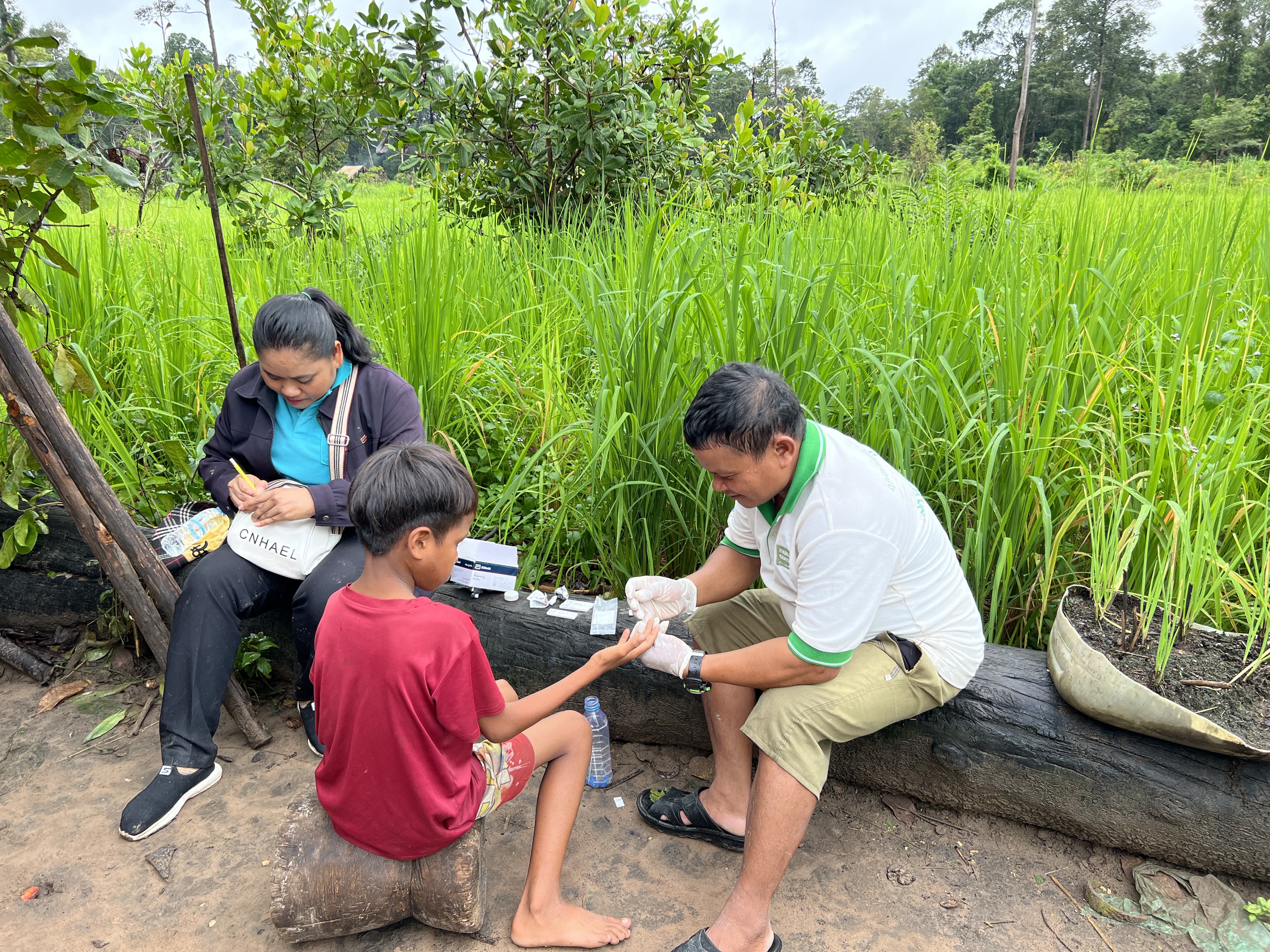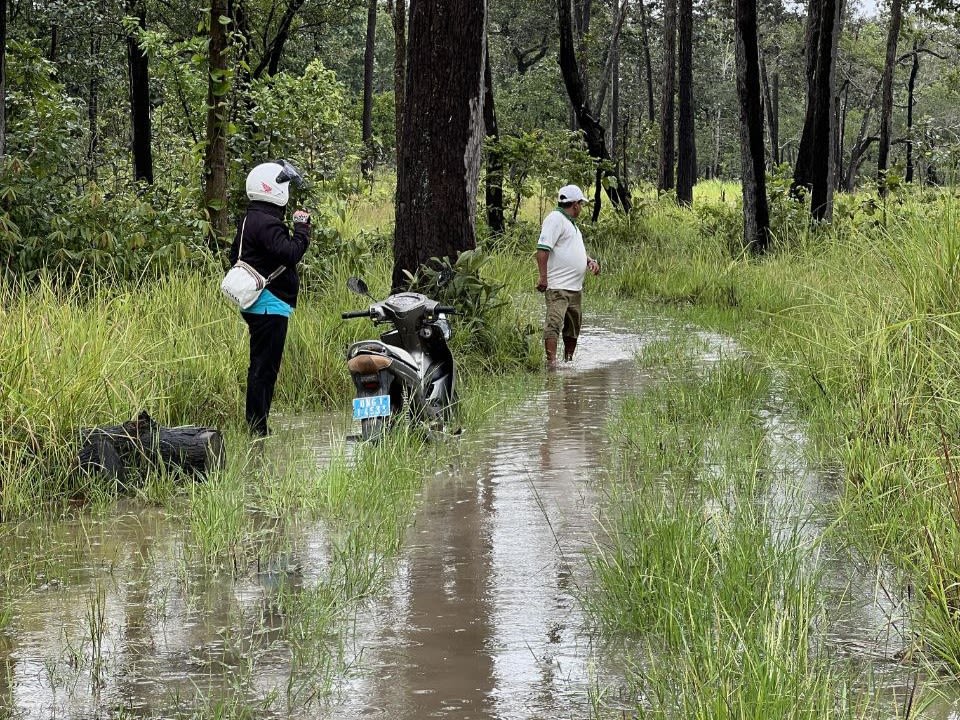San's story:
A tailored approach to detecting the last malaria cases in Cambodia

In Cambodia, a community network of mobile malaria workers (MMWs) is reaching unreached communities with essential malaria services. They are supporting the government’s aim to eliminate all indigenous malaria cases by 2025 through tailored, active case detection in remote and forested areas.
Since 2018, San has worked as an MMW in Stung Treng, a northern province of the country:
“I am so happy to introduce myself to all of you because I am so proud to help my community and my country, Cambodia, to stop the malaria disease.
My village is in Stung Treng province, in the far north of Cambodia, along the border with Laos. It is a beautiful province with many hills, deep forests, nice villages and, of course, the Mekong River.
In my village, all people are indigenous population. Before I was asked to become a mobile malaria worker, I did not know at all that malaria was transmitted by mosquito bites. Also, nobody else in my village knew about this.”
Southeast Asia
The southeast Asia region has the second highest malaria burden globally but has made major inroads in reducing the toll of the disease in recent years. According to the 2023 World Malaria Report, malaria cases in this region declined by 76 percent, from an estimated 23 million in 2000 to five million in 2022.
Cambodia
Over the last 10 years, Cambodia has made strides towards eliminating malaria. In 2023, there were just 34 cases of Plasmodium falciparum, reducing to zero by the end of the year. Plasmodium vivax cases stood at around 1,300 in 2023 but the increased presence of local forest-goers, plantation workers, and other mobile and migrant populations has contributed to sustained malaria transmission and threatens to reintroduce malaria in areas where elimination has been achieved.
Reaching mobile and migrant communities in remote and forested areas with conventional malaria approaches is essential to reach the national target of reaching zero Plasmodium vivax cases by the end of 2025, but this is challenging. People in these hard-to-reach communities have extremely limited access to healthcare and preventive tools, such as mosquito nets, which means their risk of infection is high.
Stung Treng
Under the guidance of Cambodia's National Malaria Programme, (CNM), Malaria Consortium is supporting a community network of 100 locally recruited and well-trained mobile malaria workers to offer quality mobile malaria services to hard-to-reach populations across six northern provinces along the international border with Thailand, Laos and Vietnam, including in Stung Treng province.
Mobile malaria worker, San (right), joined by Malaria Consortium staff, Rotha (left), to make a challenging journey through floodwater, O’Kasing village, Stung Treng province, Cambodia, November 2023
Mobile malaria worker, San (right), joined by Malaria Consortium staff, Rotha (left), to make a challenging journey through floodwater, O’Kasing village, Stung Treng province, Cambodia, November 2023
San reflects on his training with Malaria Consortium:
“After I was selected, I received training at the Siem Pang Health Center. This was not easy at all. I didn’t know anything about malaria and the nurse used so many difficult words — words I had never ever heard before. I asked them to speak a bit slower and explain to me again and again.
Now, I know very well how to test and treat people. I also have to write down all the names in a book. And I even use a phone to register all people who have malaria. When I started, I found so many malaria cases, mainly Plasmodium falciparum.
Now, I can smile. The tests of people in my community do not show malaria anymore as before. People have learnt a lot and understand better about malaria. They also use the nets that we distribute to protect themselves.”

The success of this tailored approach can be summarised in one word: community. Mobile malaria workers are respected and well-known community members who often belong to an ethnic minority or speak the local language and are selected by local community leaders, operational district staff, health centre staff and community members. They are trained to collect and report information accurately, and to carry out health promotion activities in their communities, such as delivering health education messages, handing out mosquito nets and testing community members for malaria.
Mobile malaria workers select new areas to operate in, as needed and according to the changing mobility of the population, to provide early diagnosis and treatment services. The team uses geospatial modelling — using data to create models that simulate real-world scenarios and predict future events — to help make decisions about where to set up mobile malaria posts and carry out health promotion activities. This ensures that resources get to where they are most needed, ensuring no high-risk areas are left behind.
San has a positive outlook about his experience:
“I am so thankful for the malaria project and the support from the Malaria Consortium team. It made me so brave and knowledgeable. I am so proud.”

